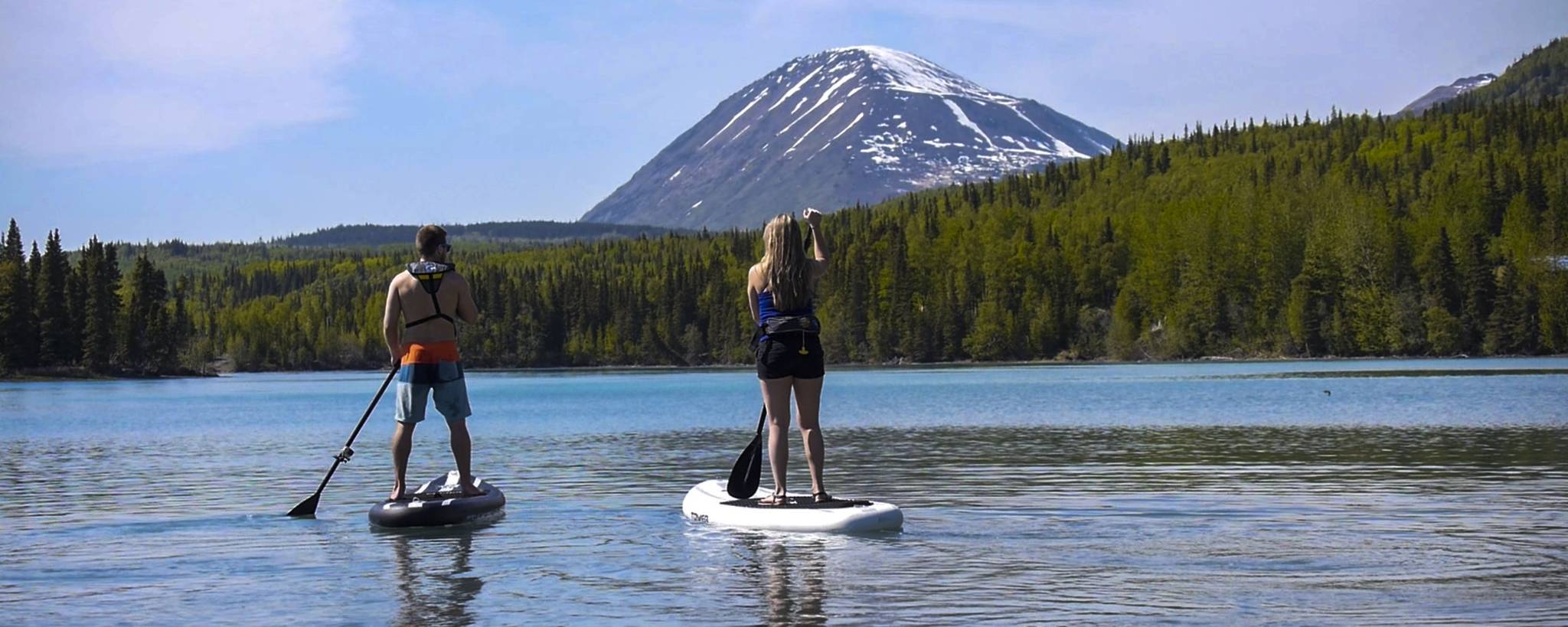Don’t be afraid of the cold water. With proper balance, getting wet is not necessary while stand-up paddleboarding.
“Many people are intimidated, they feel like they are going to fall in,” said Courtney Larsen of the Adventure Guru based in Cooper Landing. “That’s the number one biggest fear. They know the water temperature. … But you can get on the board without getting in the water at all.”
Stand-up paddleboarding is the middle sibling, stuck between surfing and kayaking, allowing paddlers to stand while exploring the waterways around them.
Modern stand-up paddleboarding originated in Hawaii, but the sport’s popularity has spread from warm waters to cold. Now, in addition to the kayaks, dipnets and bicycles strapped to the roofs of cars on the Sterling Highway, drivers may see a paddleboard or two.
“In Alaska, we have that cultural lag because we’re so far away and there is the inhibitor of falling in,” Larsen said. “But it is one of the fastest growing water sports in the world.”
Through his stand-up paddling lessons, Larsen offers paddling trips on flat water or down the Kenai River, but assures that his clients will stay warm, and will learn quickly, Larsen said.
“Almost everyone I’ve taught, they learn fast and they realize it’s not as hard as it looks,” Larsen said.
Karl Mittelstadt, of Alaska Paddleboard, has been paddleboarding in Alaska since first standing up on a board in Oahu in 2005. He bought a board for paddling in Alaska in 2012 and last year, “unofficially,” became the first person to stand-up paddle the length of the Kenai River.
“It took three years of preparation,” Mittelstadt said. “First year the Funny River fire shut us down, the second year, Skilak Lake tried to kill us, but the third year we did it. … Eventually, I’m going to connect it back to Girdwood. There are driftboats that have done it, so I know I can.”
Mittelstadt said that the point of view from a stand-up paddleboard shows Alaska in a different light.
“It’s made travel in Alaska 50 times easier,” he said. “You just walk right off, drag your board, get on the next body of water and go.”
Mittelstadt warns beginners to take a lesson though, instead of picking up bad habits from the start like he did.
“Take a lesson from a certified instructor,” he said. “Unlearning bad habits sucks and that’s what I did for two years. Alaskans are all, ‘I can do it, it’s just paddling.’ But there is more to it than that.”
Once the good habits are learned, though, stand-up paddleboarding is a low impact sport that offers a great workout.
“It’s like skiing, it tricks you into having fun while you’re getting into shape,” Mittelstadt said. “And it’s low impact so I’ll be doing it well into my eighties.”
Unlike skiing, though, stand-up paddleboarding can be done year-round.
“We’re open year-round because the Kenai River never freezes,” Larsen said. “I go down the Kenai River in the winter. The water level is lower, it’s slower and it’s beautiful. It’s just you and the birds — a little cold, but it’s absolutely incredible.”

